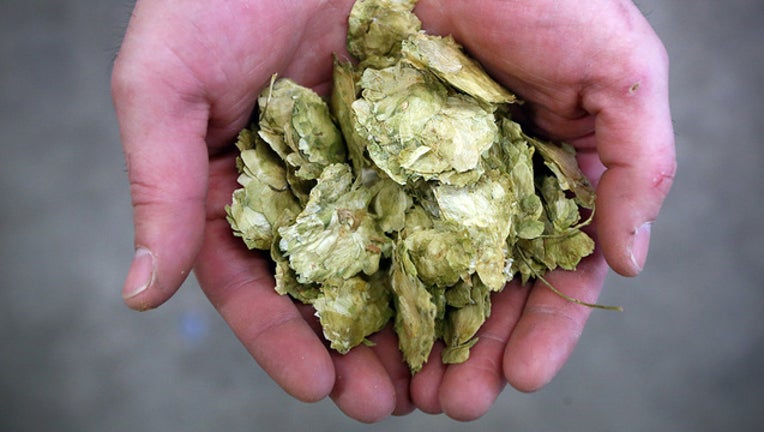Florida farms consider hemp, hops as replacement crops

Photo by Carl Court/Getty Images
TALLAHASSEE, Fla. (NSF) - Hemp and hops are being promoted among alternatives for crops wiped out by Hurricane Michael in the eastern Panhandle.
Glen Aiken, director of the University of Florida’s North Florida Research and Education Center, said Monday the need for alternatives has grown as farmers in an eight-county region suffered most of the estimated $1.5 billion hit to the state’s agriculture industry in the October storm.
But Aiken, in addressing the Senate Agriculture Committee, said the first step is convincing growers and ranchers about what could be best for their fields, particularly those in the timber industry, which accounted for more than $1.28 billion of the losses. Timber operators face the prospect of decades before new trees mature.
“We’ve got to get something going on these properties that are generating some income,” Aiken said. “And to do it, farms are different, farm operators are different, the more risk they’re willing to take, the chances are we can generate more income off that land.”
Along with the timber damage, Aiken said tomato and cotton crops were a near total loss as they were both close to harvest. Meanwhile, cattle deaths were significant, and, because of damaged fencing, it took weeks to round up and return surviving animals.
“These growers are in a serious bind,” Aiken said. “They’re asking for our help, and we’re trying to give it to them.”
A workshop for farmers on management strategies, particularly for those in the timber industry, has been set for Feb. 12 in Blountstown.
Aiken said hemp, which has been promoted by Agriculture Commissioner Nikki Fried, has multiple uses, including medicinally through the extraction of cannabidiol, as a high-quality fiber for rope and clothing and even as food.
“I know of an entrepreneur in Kentucky that processes hemp sausage,” Aiken said. “It’s hemp and pork combined. I had some. It’s not the best sausage I’ve ever ate, but it wasn’t too bad either.”
Hops also has a number of uses, but primarily could serve the state’s craft breweries, which have increased from 66 in 2013 to 243 in 2017.
Other alternative crops include olives, some hardier citrus varieties, such as satsuma, and lupines, which produce an oil that can be converted to biodiesel and a high protein meal.
Hurricane Michael made landfall Oct. 10 in Mexico Beach and then caused billions of dollars of damage in heavily rural areas as it roared north into Georgia.
Its damage to the agriculture industry came a year after Hurricane Irma ravaged citrus growers in many areas of the state. But Shannon Shepp, executive director of the Florida Department of Citrus, told the Senate committee Monday that the worst is over for citrus growers.
“We do believe the bottom is behind us,” Shepp told the committee. “I like to say this is going to be an upward trajectory. There is a lot of replanting going on and a lot of good success stories coming out of the labs.”
Shepp’s comments came as the industry prepares for Friday’s release of the first monthly seasonal outlook from the U.S. Department of Agriculture since December, when the forecast indicated growers this season would fill 84.6 million 90-pound boxes --- a standard measurement --- with oranges, grapefruit and specialty fruits.
The December monthly projection had the state filling 77 million boxes of oranges, 6.4 million boxes of grapefruit and 1.2 million boxes of tangerines and tangelos.
“That is post-hurricane recovery,” Shepp said. “We didn’t do that in 2004 and 2005, when we had three hurricanes hit the (central part of the) state successively.”
While down nearly 3 percent from the season’s first forecast in October, the projection was still well above the 49.58 million boxes of citrus produced during the 2017-2018 season, when the industry sustained heavy damage in Irma.
The 44.95 million 90-pound boxes of oranges in the 2017-2018 season was the lowest production in Florida since the 1942-1943 season.
In mid-1990s, the state’s citrus growers were filling more than 200 million boxes a year of oranges and 50 million boxes a year of grapefruit.

